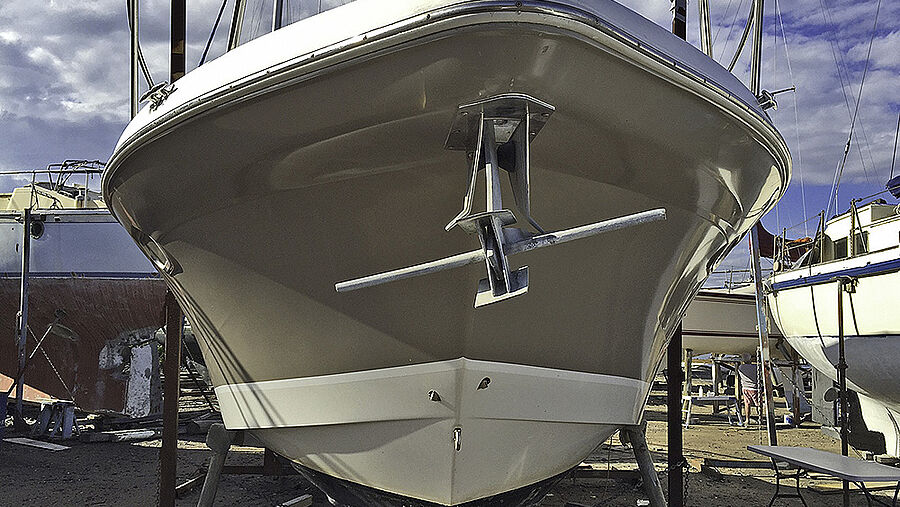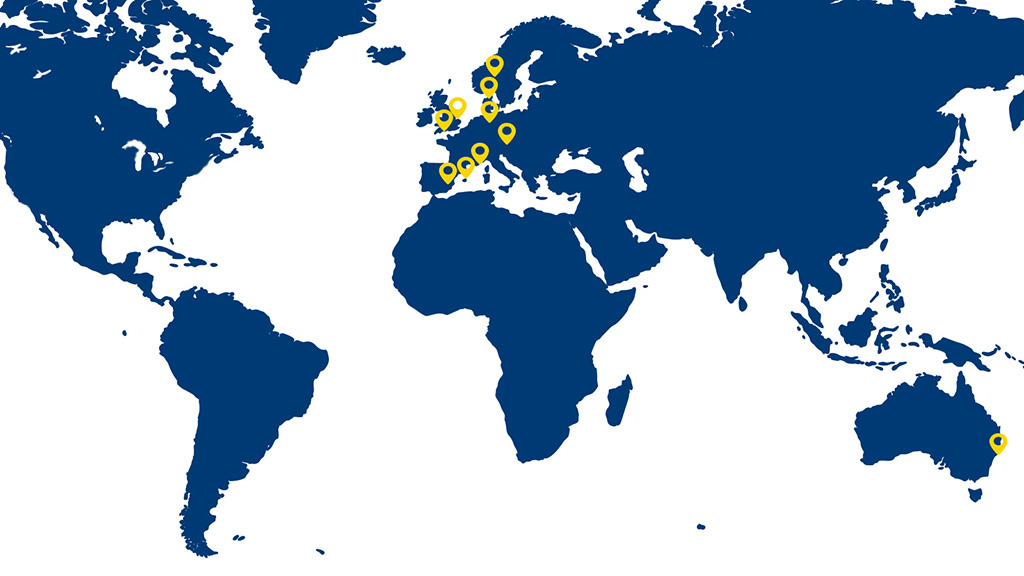Safe anchoring
Undoubtedly this is one of the things we all think we do well, but a few aide memoirs and prompts can never go astray. Indeed they can help you to have a great time boating, no matter where you go or what you like to do.
Ultimately it is more than essential part of your seamanship, it keeps you, your crew, vessel and those around you out of harms way.

So even a little more attention to detail before you set about fishing, swimming, or spending the night will add to the overall safety of the expedition. This is even more important in moments of higher stress, like engine issues, high winds, strong and big tidal flows, shallow water or underwater hazards. Remember, you cannot put the boat into ‘P’ for park, or apply the handbrake!
Just like in real estate, think - Location, Location, Location!
Where you can, research where you are going before you get there. This can be Word of Mouth, Pilots, Cruising Guides and so on, but extra knowledge will always be helpful. Similarly, arriving in daylight, particularly for challenging locations removes one extra variable from the equation. Naturally, it is not always possible, but where it is, do so, especially if you have not been there before.
Choose an anchorage area that offers maximum shelter from the prevailing winds, tide and other boat traffic. Using an updated chart, determine the water depth and type of bottom. Preferably select sand or mud, as opposed to rock, heavy seaweed or grass. Your ideal spot will also have ample ‘swing room’ for your boat in all directions.
If you’re staying a while or overnight, check tide movements, wind direction and compare these against the latest forecast information. If you have a big tide change, shift in wind direction and/or strength, then you could easily swing through 180˚, and so the anchor may be pulled clear and reset. Now if you are in front of a lee shore, then you will want to pay close attention to any anchor drag. Avoid this if possible or set radar alerts and anchor watches.
Scope It Out
This is quite possibly one of the factors that gets paid the least attention, yet remains paramount to a successful deployment of your ground tackle. The reason is quite simple. You put out much more of your total anchor rode (the complete tackle that joins the anchor securely to your vessel), than for the actual depth of the water you are in. This is because the anchor stays more secure when the shank is pulled horizontally, than it ever will vertically.
It is because of this, and also the vessel sheering around on the surface, that swivels have become very popular, instead of the traditional shackle. Equally, there are now many, many types of anchor or ‘pick’ to choose from these days. Danforths and CQR/Ploughs remain popular, but speak with your supplier about your intended use, types of ground you go to, size and importantly displacement of your vessel, before making your selection.
Anchor rodes usually are an amalgam of chain for the first section off the anchor, and then stretchy nylon rope. Depending on the size of the anchor, here in Australia you’ll need 3-8m of chain. However, if you are in high wind areas, or go to places like Lord Howe Island where there are a lot of rocks, then you will require an all chain rode. This can afford up to 2/3 of the holding power to be carried in the rode. Note that in over 30 knots, all rodes will be virtually taught, which then means your anchor and deck gear is taking all the load of windage and tide against your vessel. A snubber can certainly assist with all this too, especially if you have good nylon in your rode.
Finally then, scope really means ratio, which is how much you put out versus how deep it is. In no breeze and if you’re staying just for lunch, then 3:1, in feet mind you, is the magic number. Yet as the breeze builds, you will have to go out to 7:1 and some even prefer to be at 10:1, which means 10 feet of water and 100 feet of rode out! Note to self, remember to think about the implications of all that whilst you’re sheering around at anchor.
Tortoise and the Hare - Slow and Steady always wins the race
Anchoring should not be a rush job. Make a slow and steady approach to the spot you want to anchor at and drive the bow into the wind or tide, which ever is the stronger. Go past where you intend to be keeping in mind your scope, come to a complete stop and then drop, having made sure the tackle is clear to run.
If you are on your own and have to release the anchor manually, then please go to the bow with a PFD on. Your anchor and rode will go to the bottom and your vessel will naturally back away in the wind and/or tide. This is good, for it prevents the chain piling up on top of the pick, but you do need to monitor this process, especially on your own, for going astern to ‘set’ the pick into the ground is an important part of the overall process, and wind alone is usually not enough.
Automatic windlasses have gauges on them to tell you how much rode is out, but if you don’t have this, then painting the chain to mark 10, 20, 30m and so on is important. If you have nylon in there, then you can simply weave coloured tangs in, which are incredibly visible against the white nylon.
2, 4, 6, 8 Dig In - Don’t Wait
We have just sort of spoken about it, but when you have all of your required rode out, do back down on the anchor with your engine in idle reverse to help set it. Many skippers make only a half-hearted attempt to set the anchor by putting their yachts in reverse for a mere few seconds.
Now to assure your anchor is firmly set, you must put a reasonable strain on the rode until you see the anchor rode stiffen, and the bow dip slightly downward (much less so on bigger displacement craft). Note to self, as you back down, do keep an eye on the rode in the water. If it is dragging it will telegraph the lack of grip as it bumps along the bottom, whereas a set anchor will not shake the line.
Avoid a Bad Experience at the Bitter End
Now it sounds like a no-brainer, but always make sure the bitter end of your anchor rode is attached to your yacht. Many an anchor has been lost as an unfastened end slips around the windlass and off the anchor roller. So, always make sure the bitter end is fastened into the pad eye in the anchor locker.
Equally, if you are all chain, then make sure there is a rope between the pad eye and the last link that is long enough to come out of the locker and up to the anchor roller. You will still never loose the rode, but if you have to cut free in an emergency, then a knife goes through nylon way better than galvanised steel!!!
Equally important: the anchor rode should be connected to your yacht at a hard point in the anchor locker—and this should be done with a rope that’s long enough to reach up to the deck and across to the anchor pulpit. There are two reasons for this. First, you’ll never lose the anchor if you run out of all the rode. Second, if you need to cut the yacht free from the anchor, you can easily do that with a knife.
Keep Watch
Once the anchor is set, scan your surroundings for reference points. After that, every hour or so make sure those landmarks are in the same place, playing particular attention to your sheer by remembering the compass bearings of both sides of the arc. If they have moved, then so too have you, which could be weather, tide or you dragging anchor.
Also, set the anchor alarm on your GPS plotter and/or radar. Set them so they alert you if you swing too far. There few boating experiences as frightening as waking in the middle of the night with the wind howling and your vessel dragging anchor toward rocks, the shore, or other boats. Help can never come quickly enough in those instances and one thing always leads to another in these instances, so don’t let it go from bad to worse.
Know the ‘Rules of the Rode’
If other boats are anchored in the area you select, follow good anchoring etiquette and ask the boat(s) adjacent to the spot you choose what scope they have out, so you can use that information to anchor in a way that will prevent potential collisions and entanglements.
As part of this process, do keep in mind that heavier yachts swing slower and tend to have a bigger arc than smaller, and lighter vessels. Also, boats with a lot of windage (big canvas enclosures, large cabins, high freeboard) will swing faster in high winds. Because of their low deck profiles, most yachts are affected by the tide flow first, whereas cabin cruisers are more of a wind vane.
Keep the Lights On
Better yet, deploy the anchor ball if you have one. Then when the sun goes down, or in low visibility conditions, turn your anchor light on. It is 360˚ for a reason and should be visible for around 2nm. Solar lights generally do not have enough grunt or staying power, and with the low draw LEDs around now, a bright anchor light will not drain your batteries. Plus, if you are coming back from ashore you can often run right down the light beam and see any obstacles in the water.
Care and Spare
Get into the habit of giving your entire anchor system a safety check on a regular basis. Watch for things like chafe, loose shackles and bent flukes. You can also repaint the length markers at the same time. You really should store at least one extra anchor and rode on board, especially if you are cruising long distances or into unknown territories. If you loose the main one you have a spare, often you’ll need two to stay firm anyway and in an emergency, deploying even a small anchor can keep you from running aground!
Now Pantaenius Sail and Motor Yacht Insurance is here to help you enjoy your boating and get the most out of it. In a way, it is part of the all-risk policy that Pantaenius has covered you with, so if you have a question, search the site at www.pantaenius.com.au, or call +61 2 9936 1670 and speak with one of the crew that really know boats.
Original material by Chris and Alyse Caldwell - www.captainchrisyachtservices.com
Revised and adapted by John Curnow
